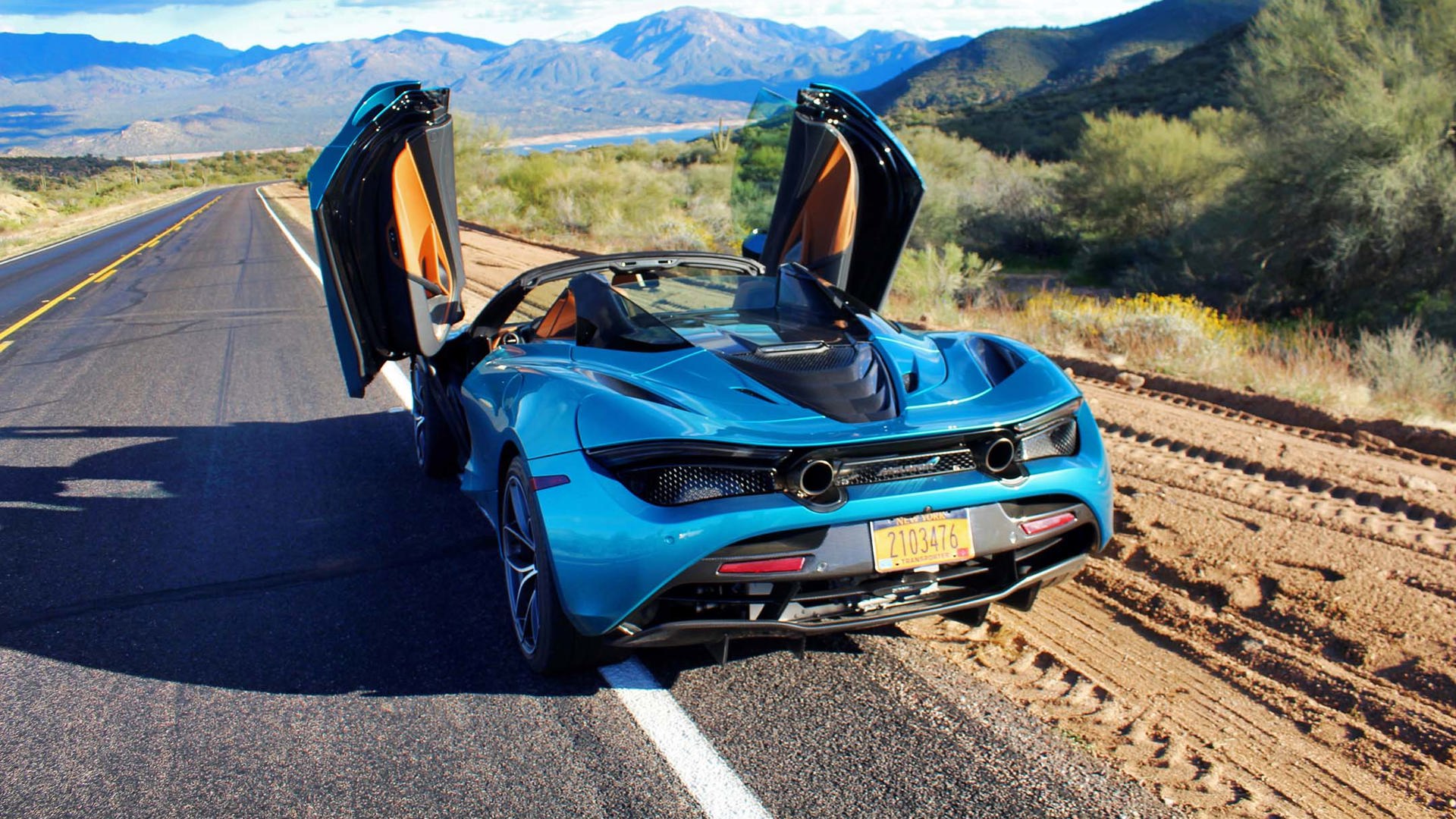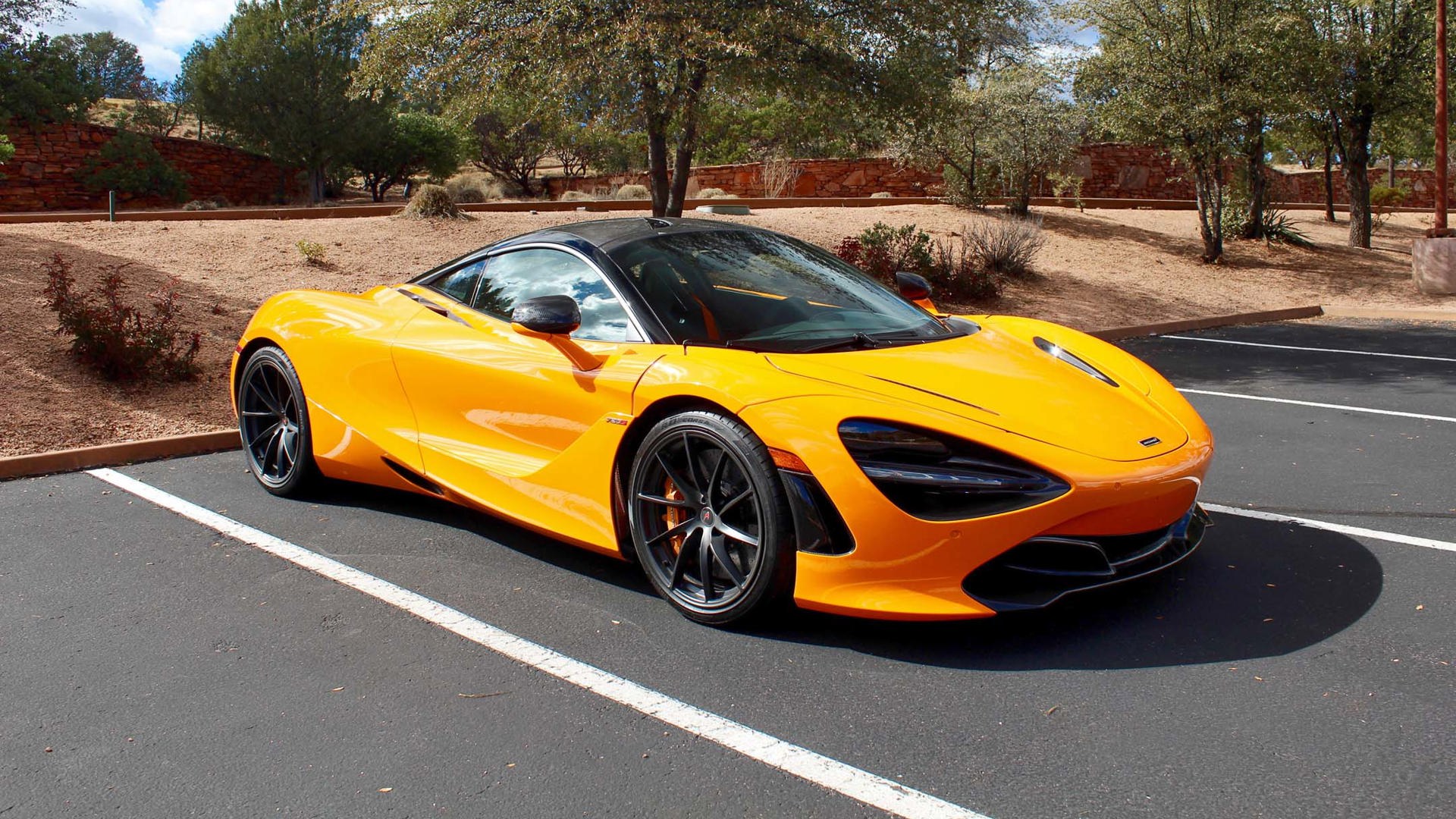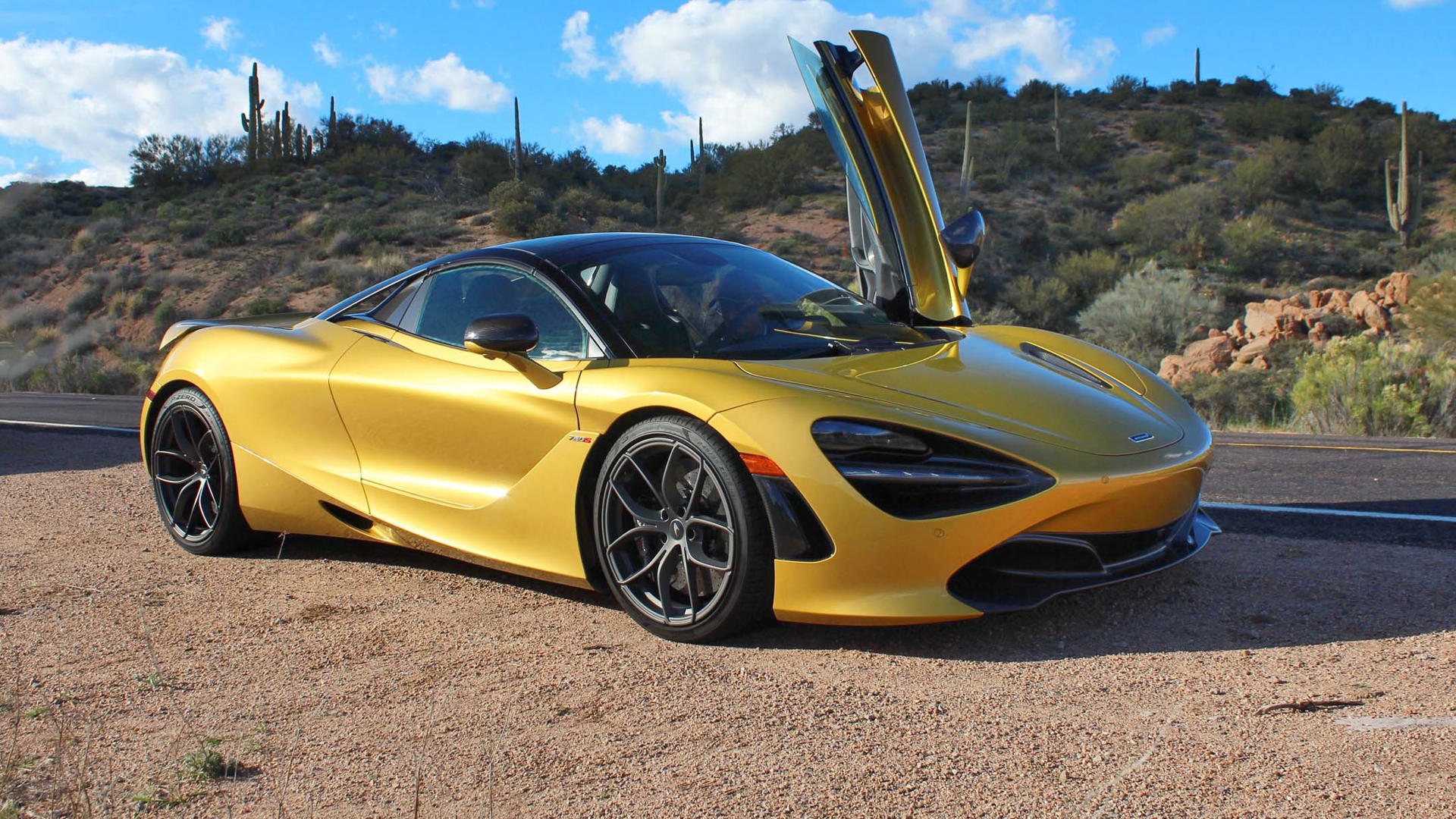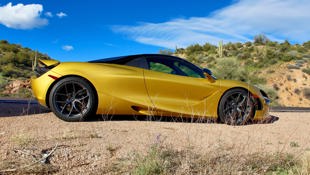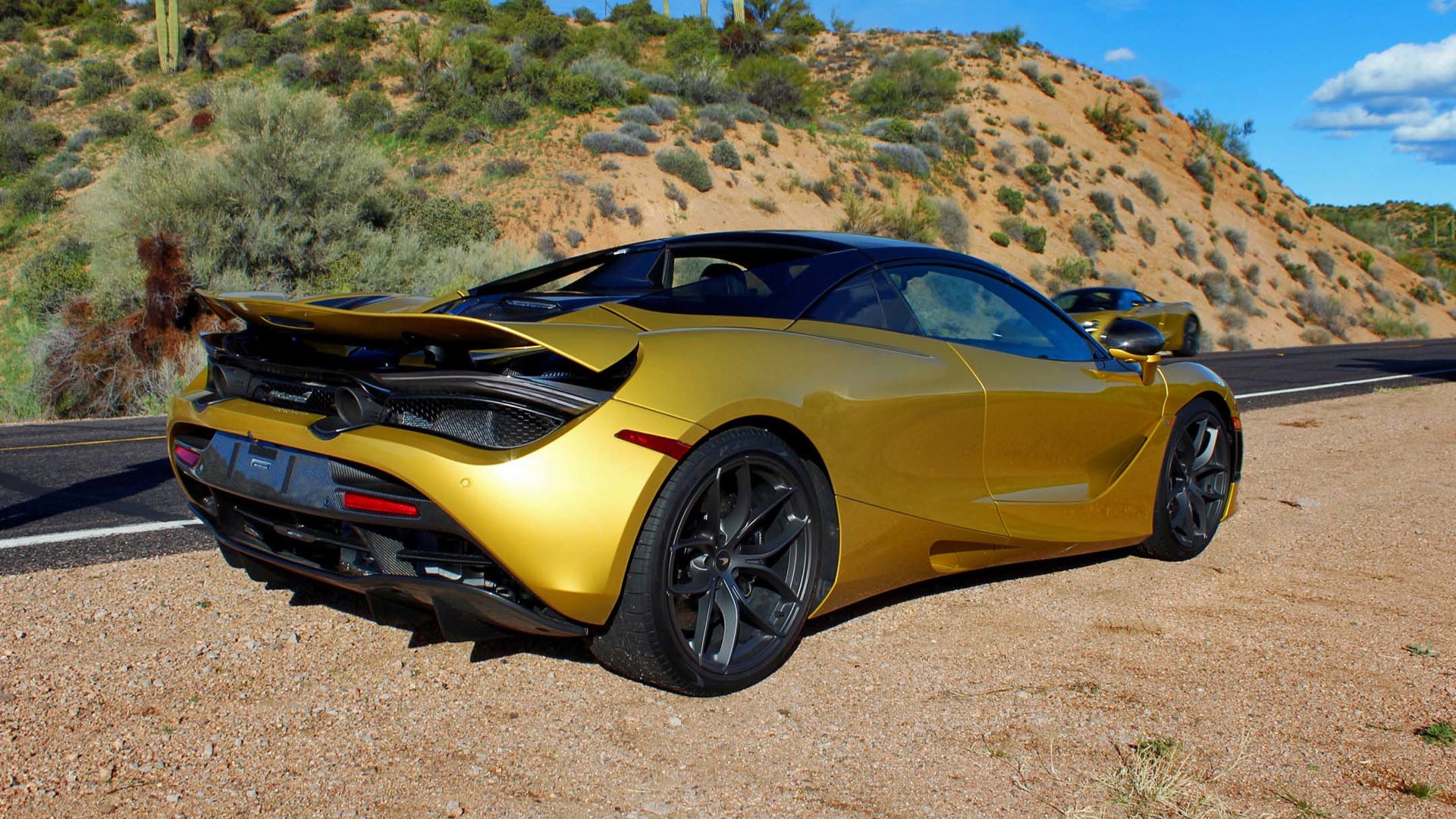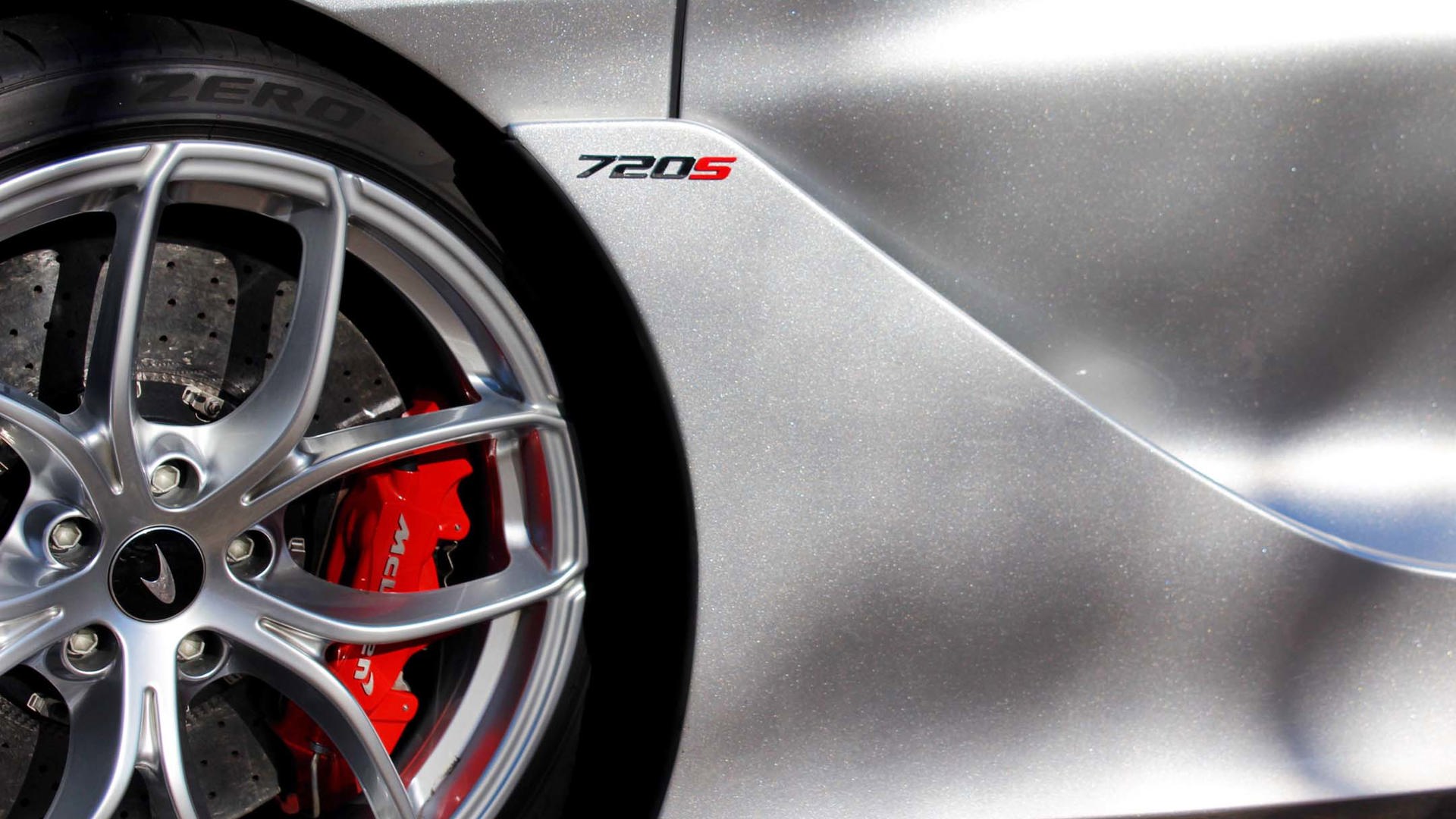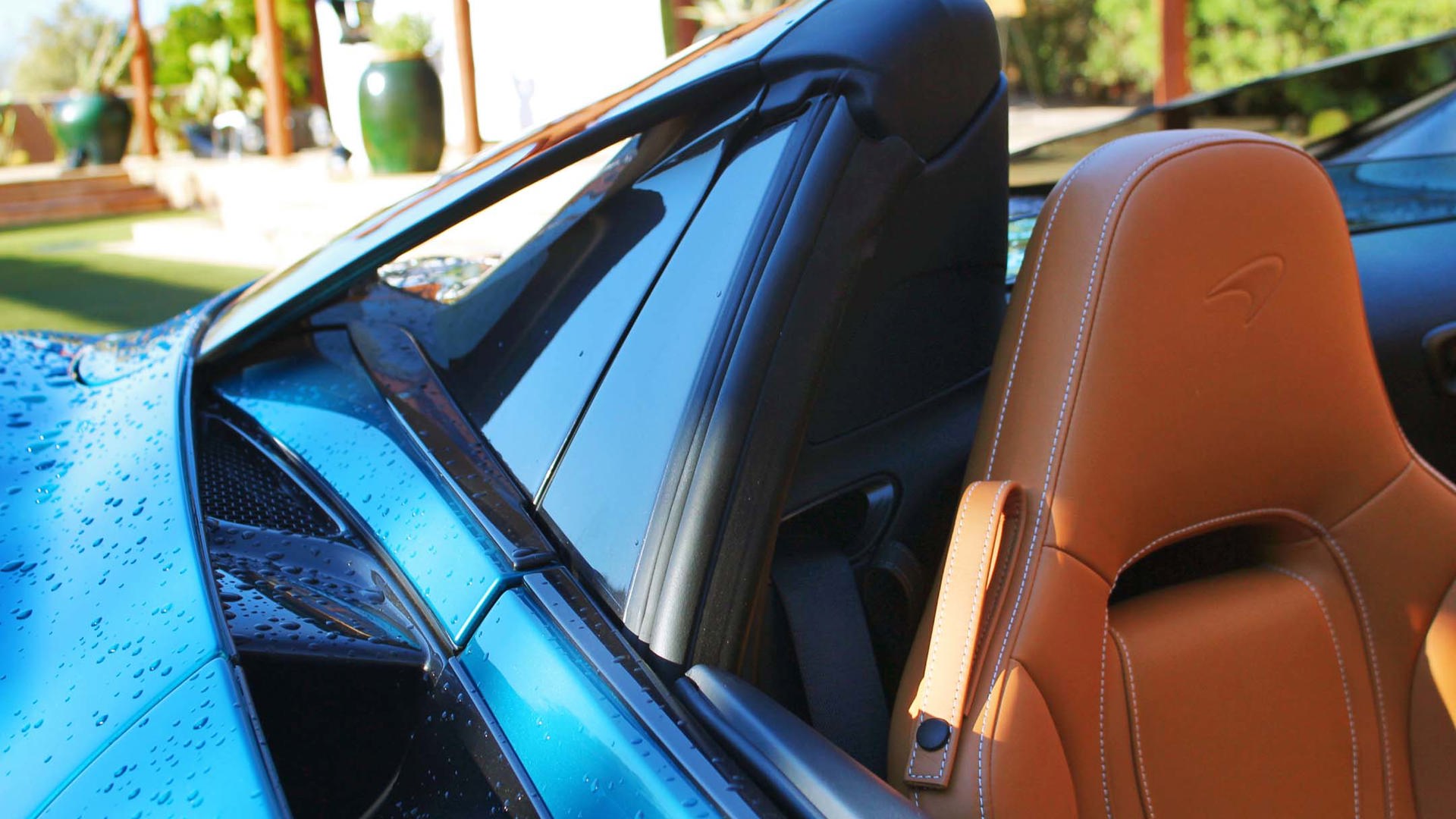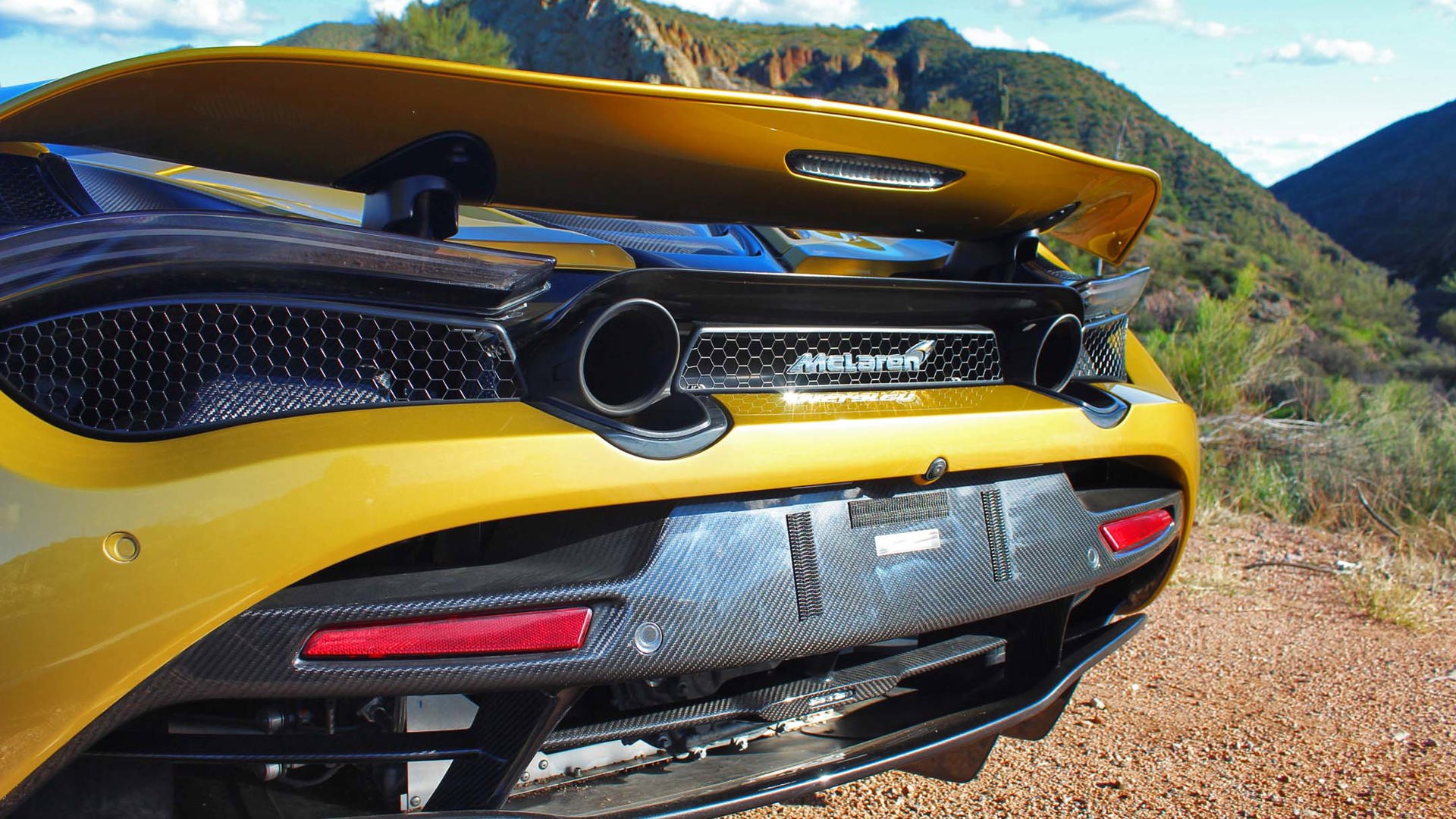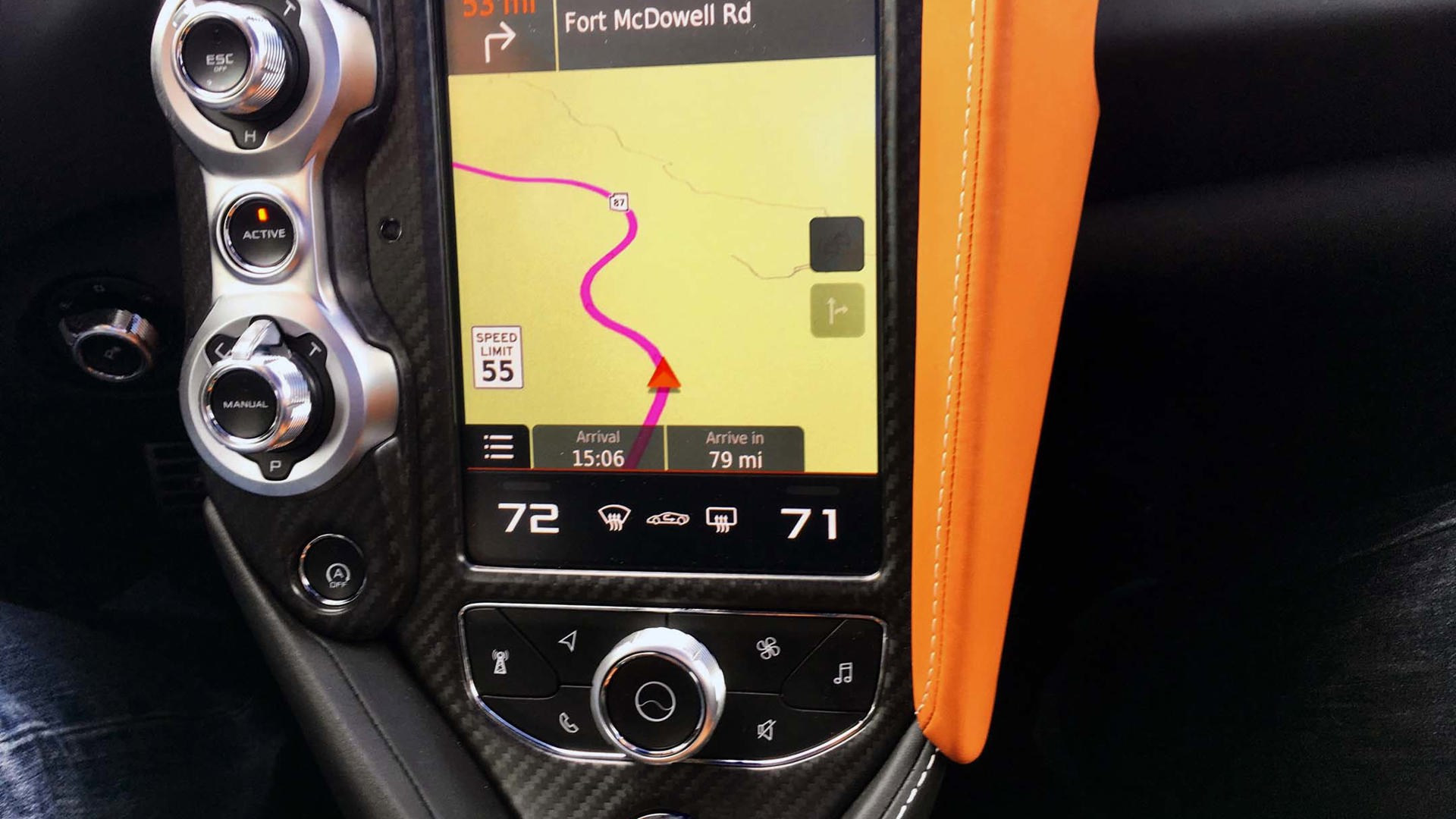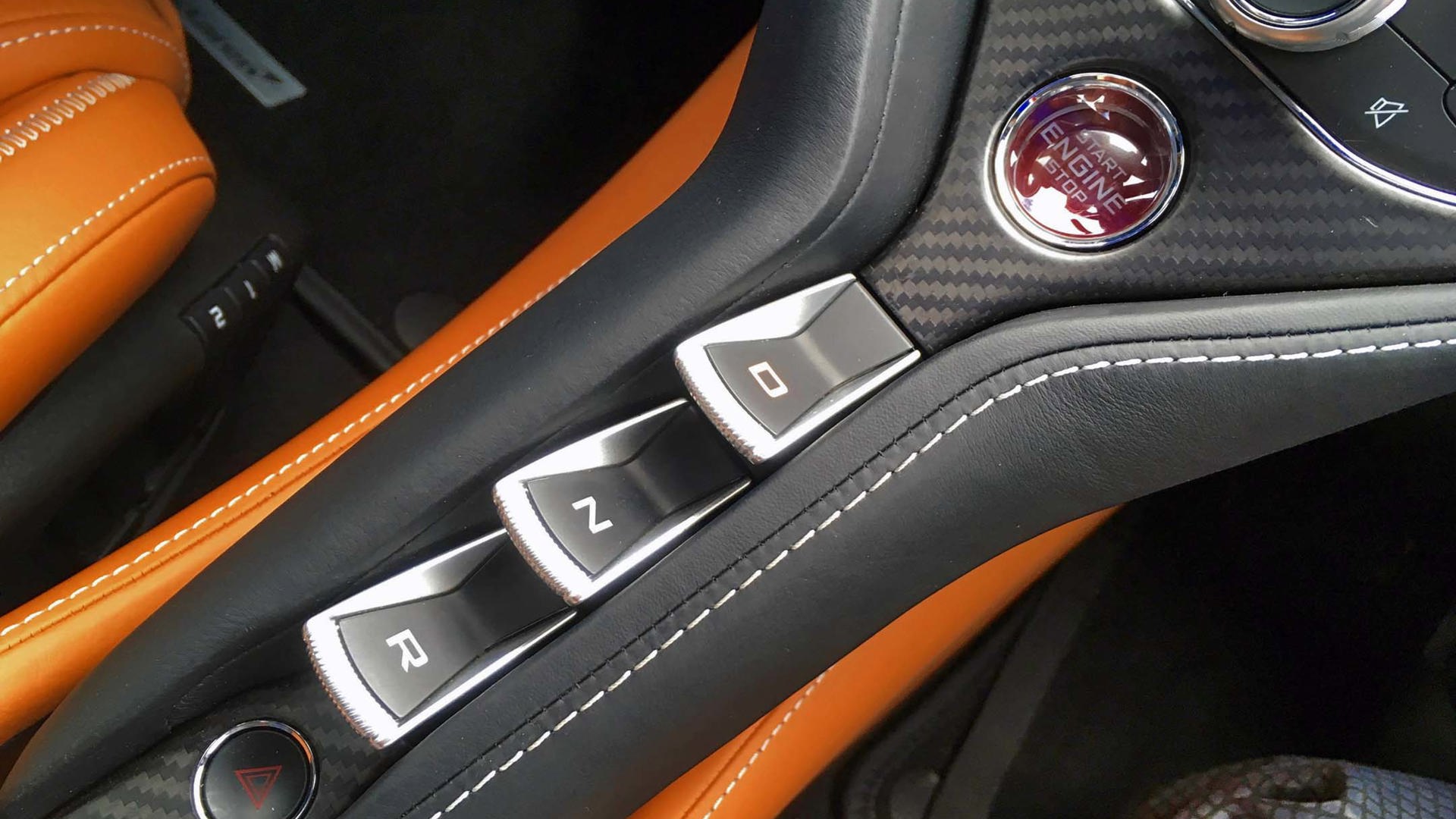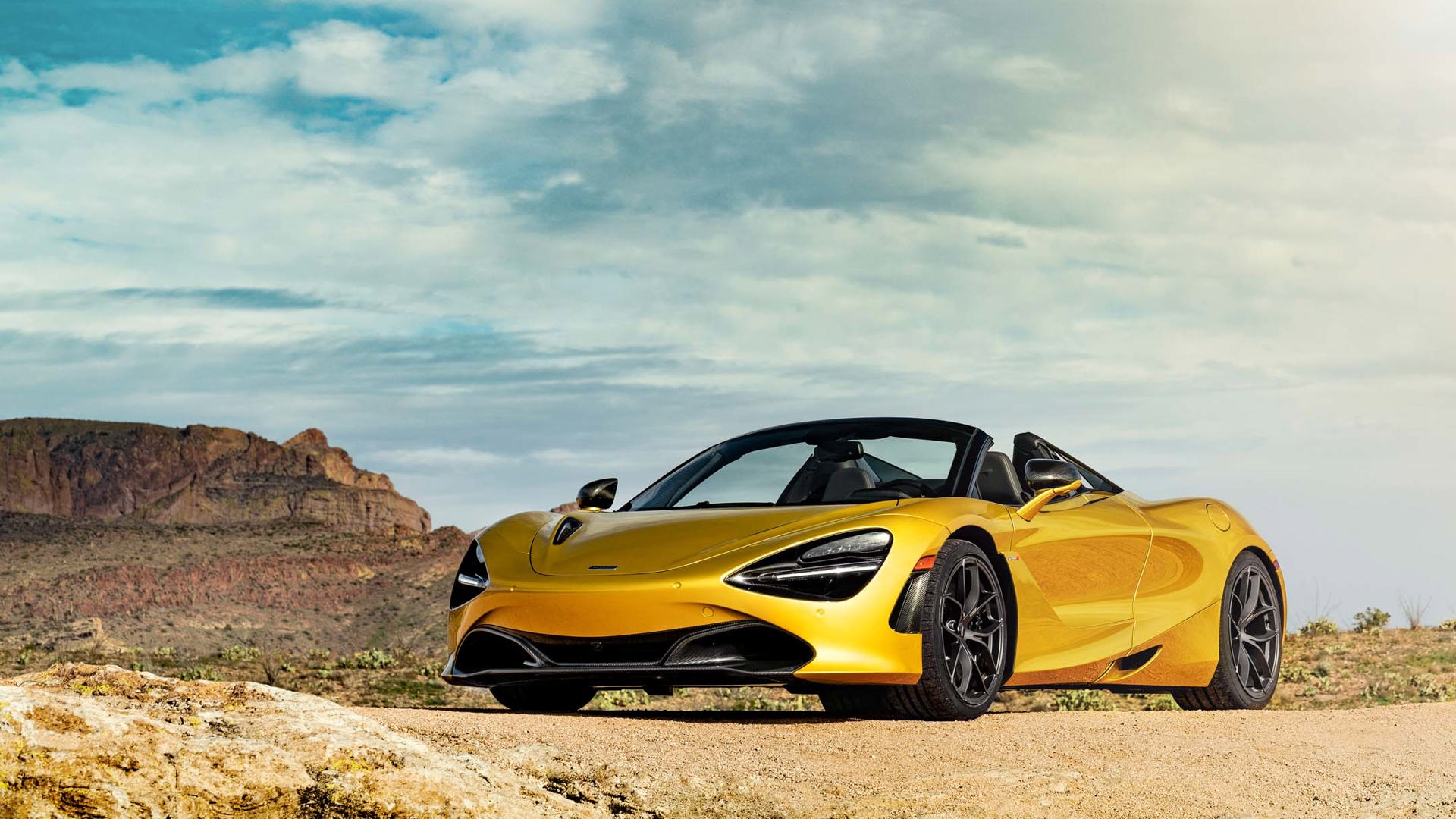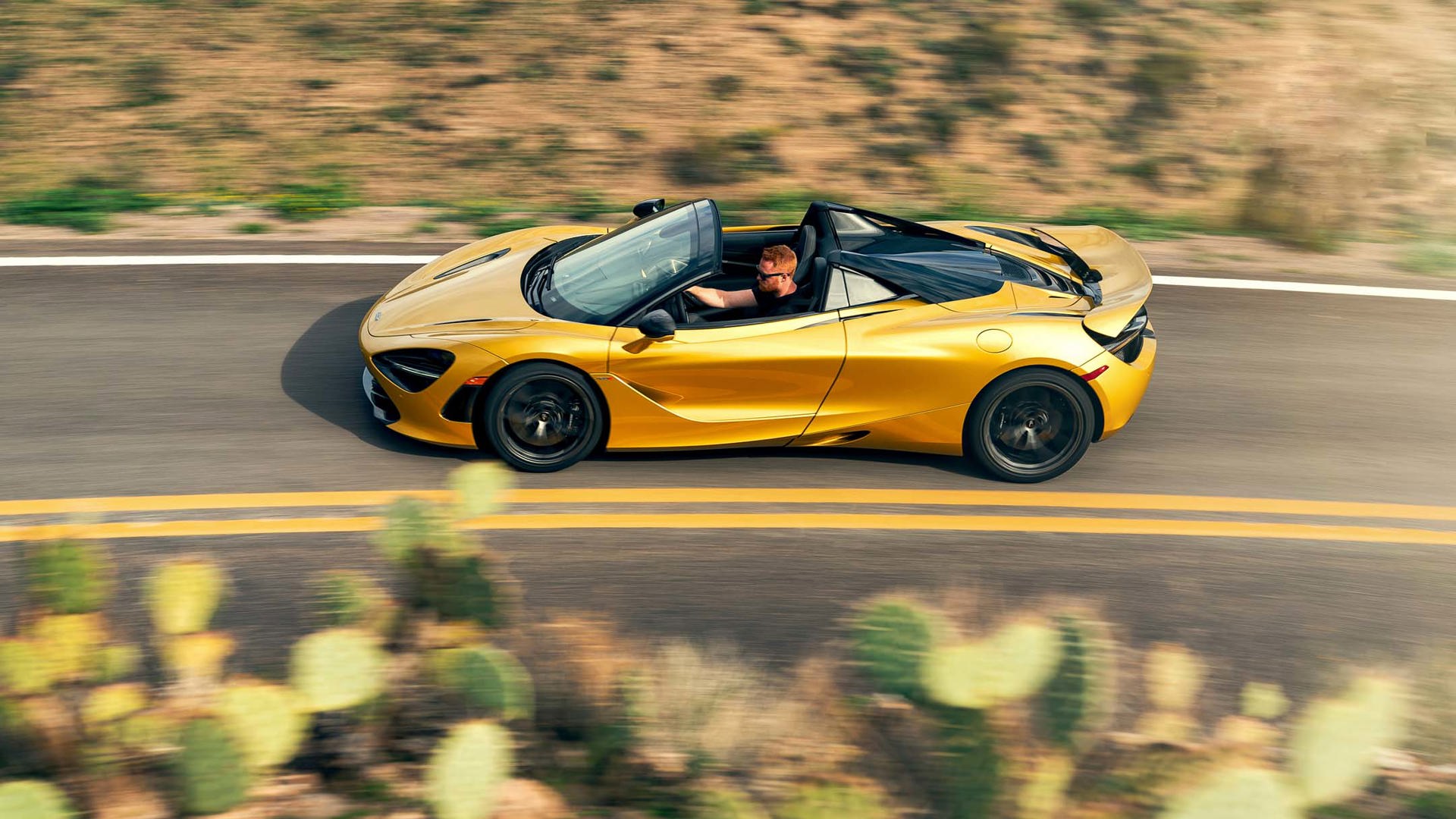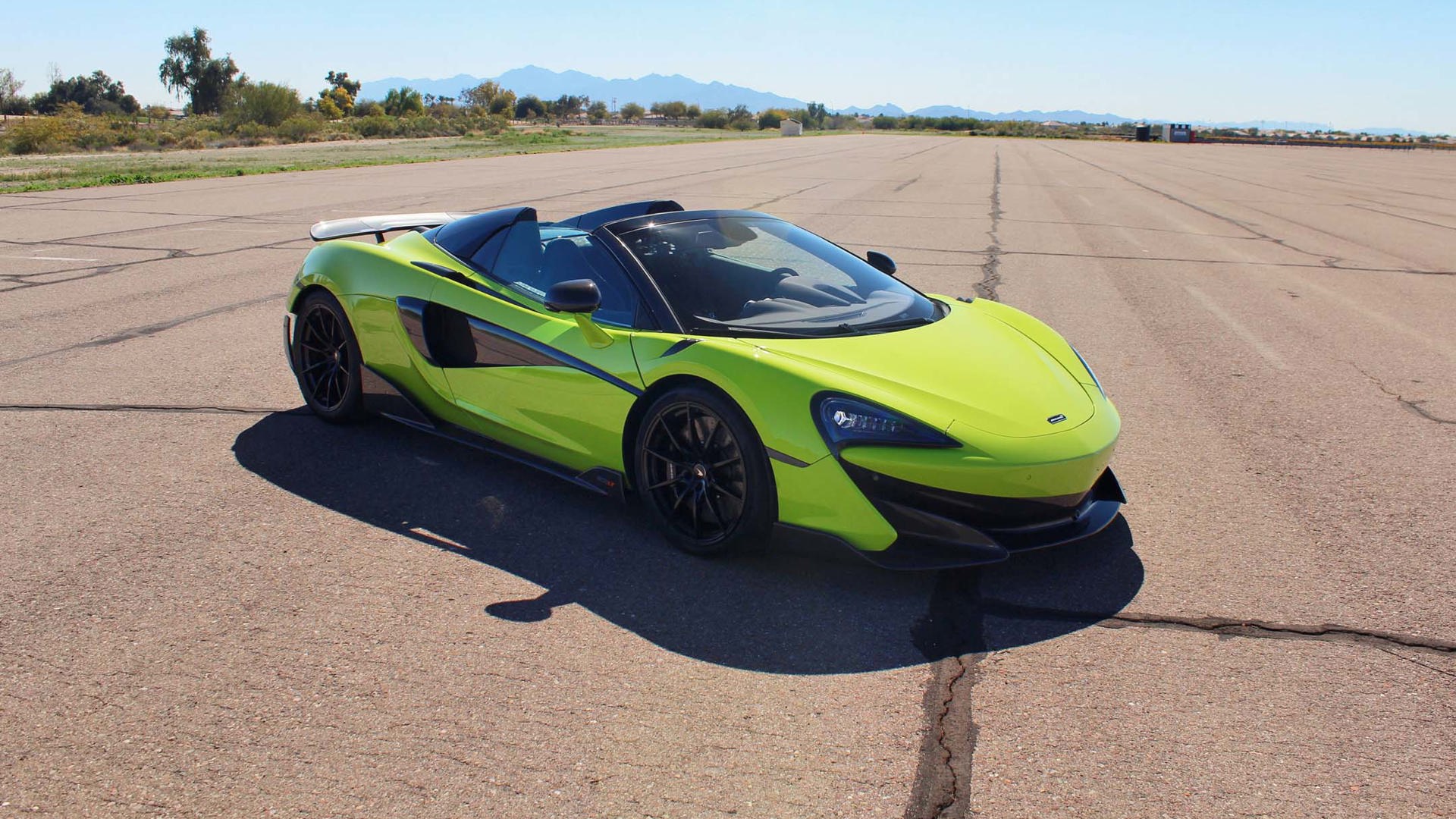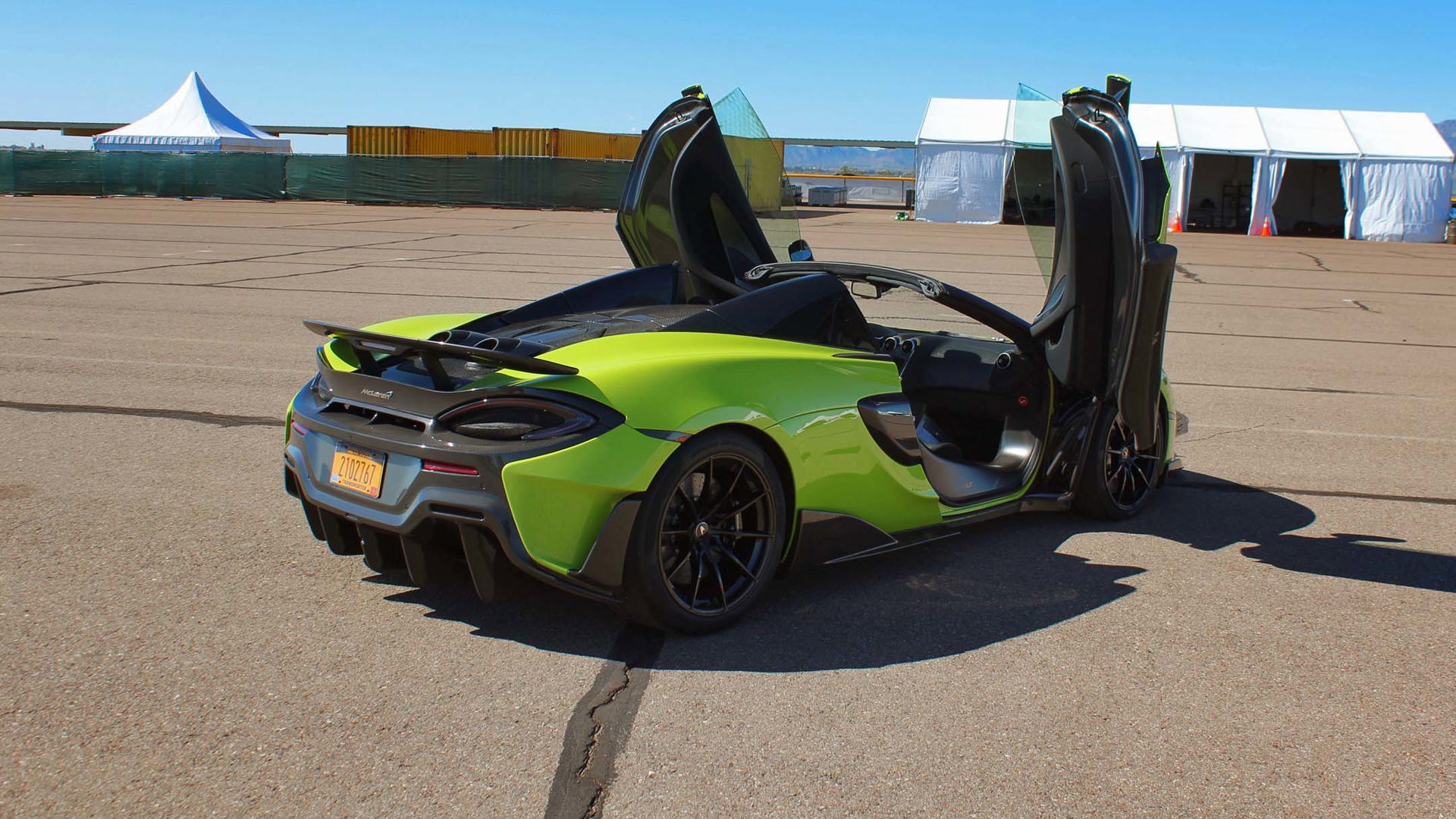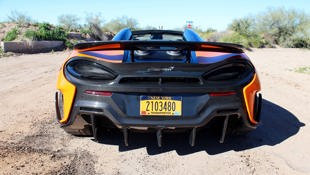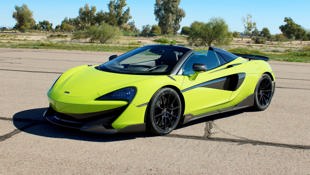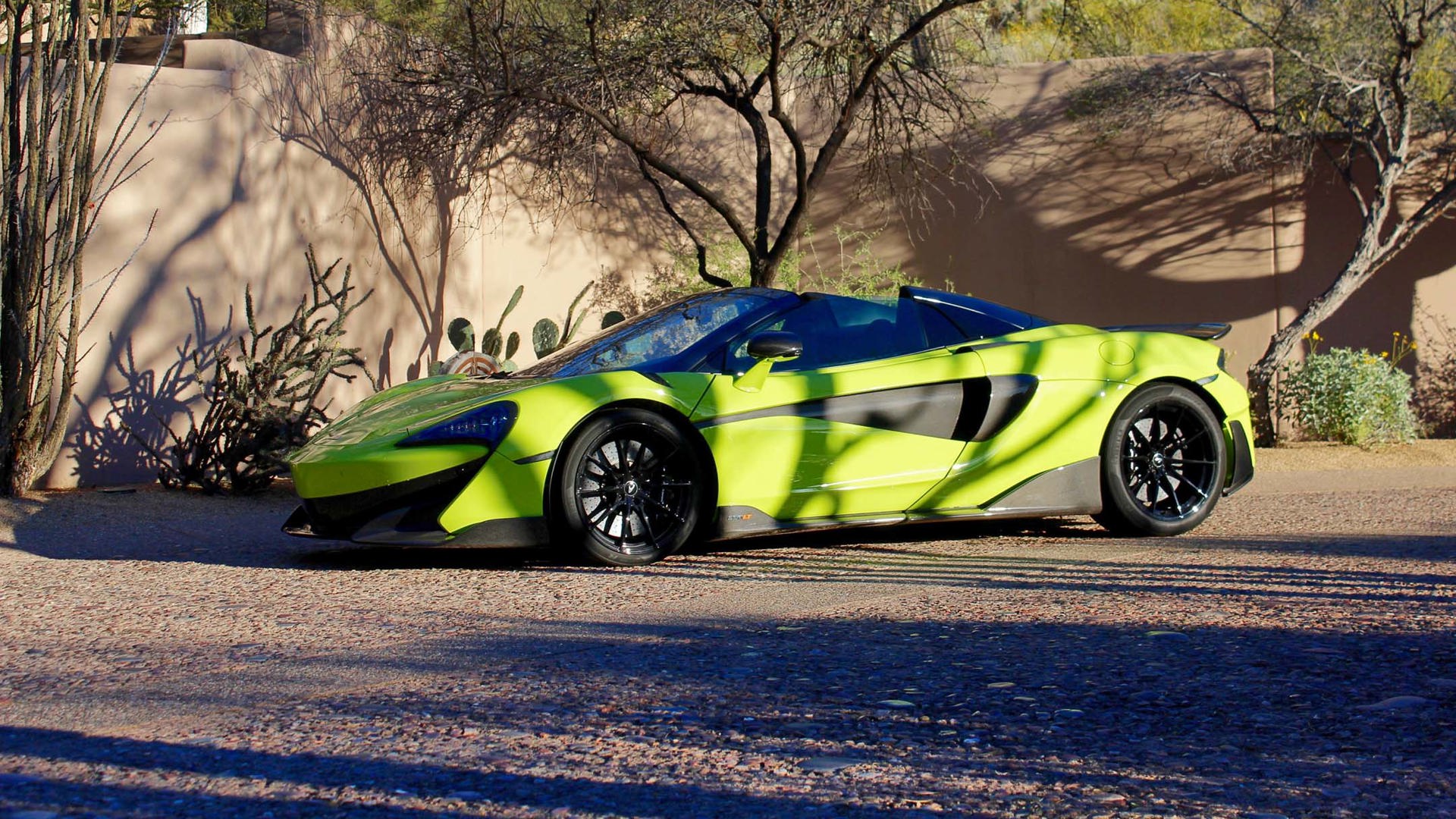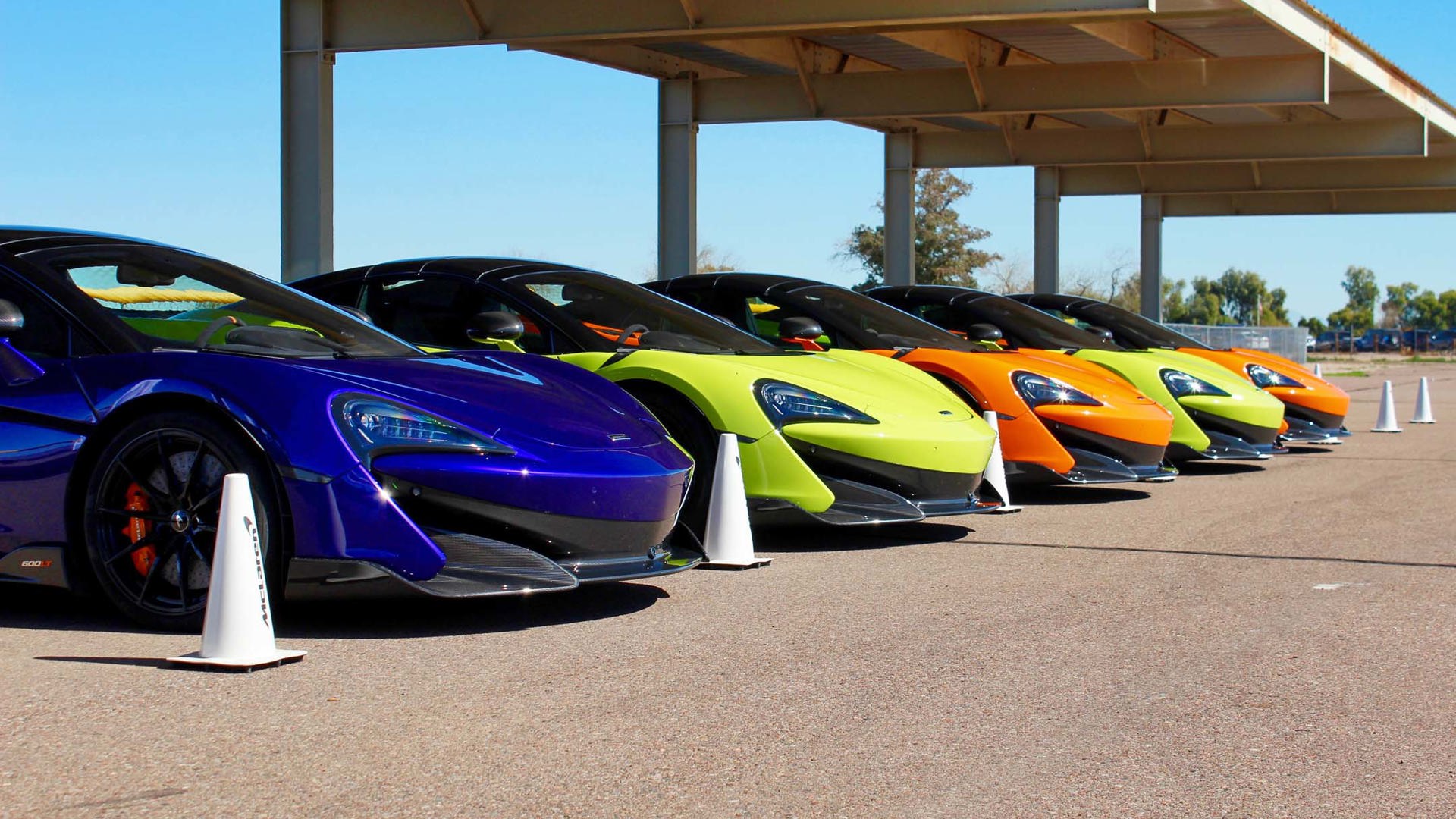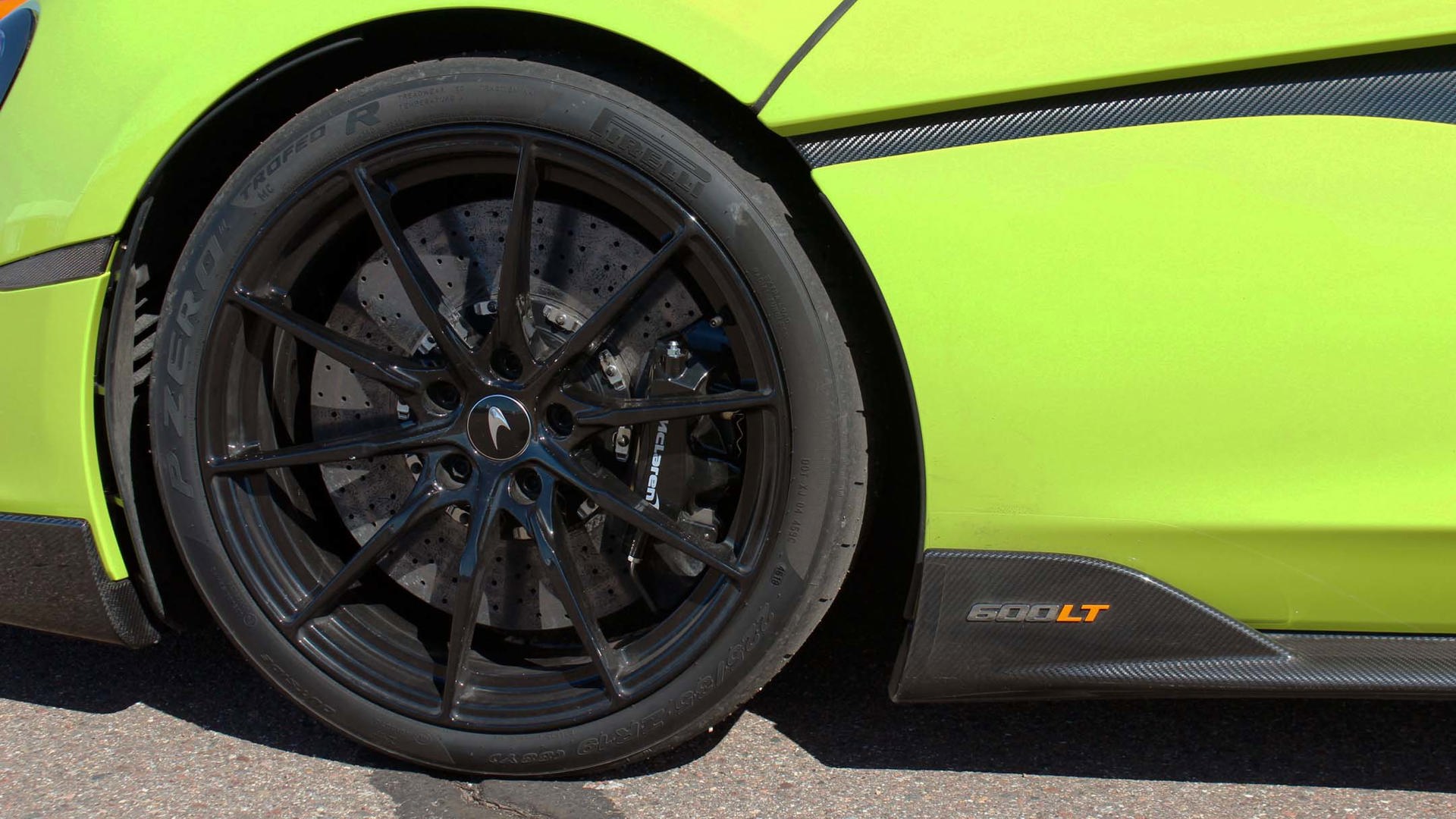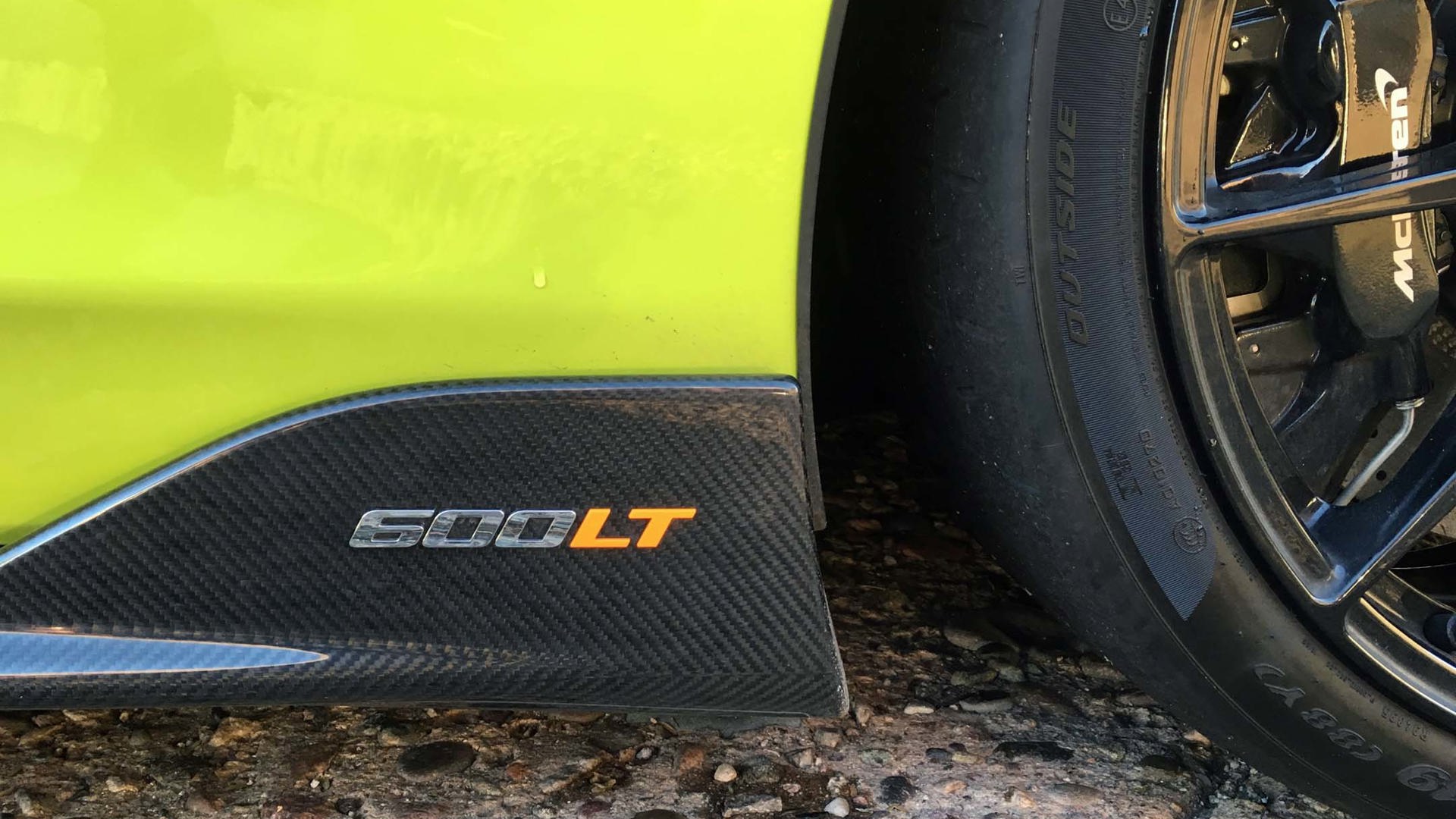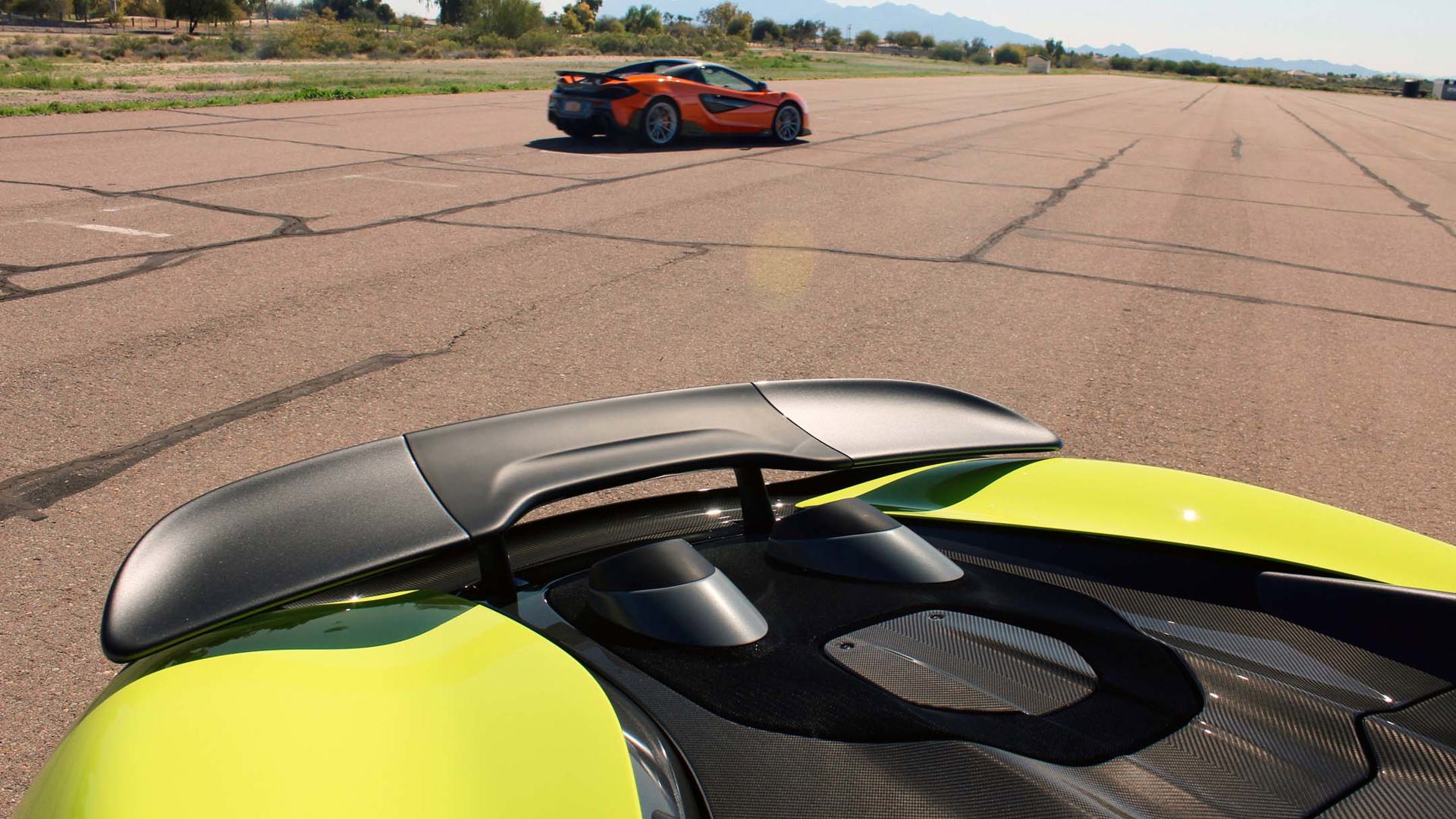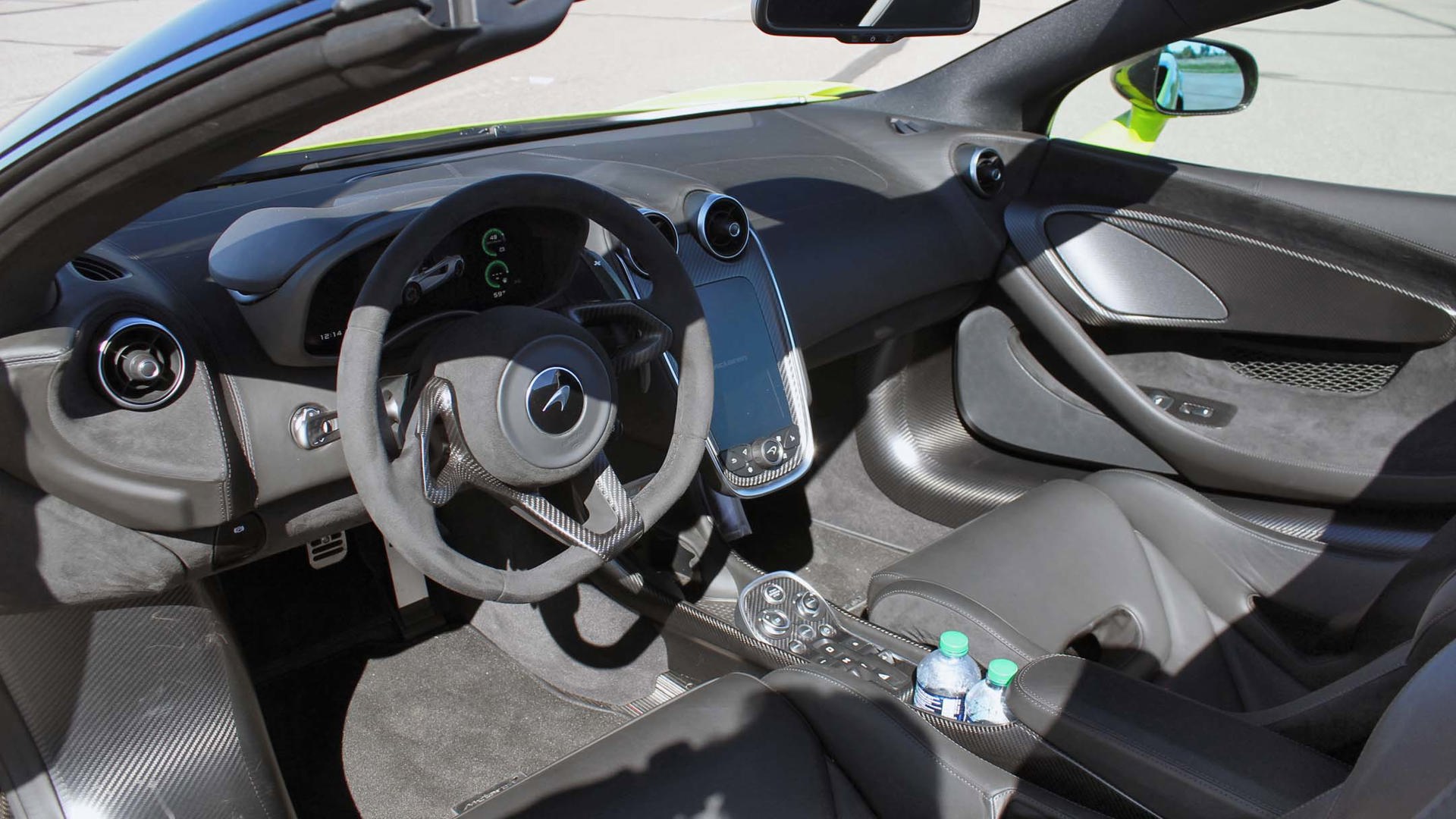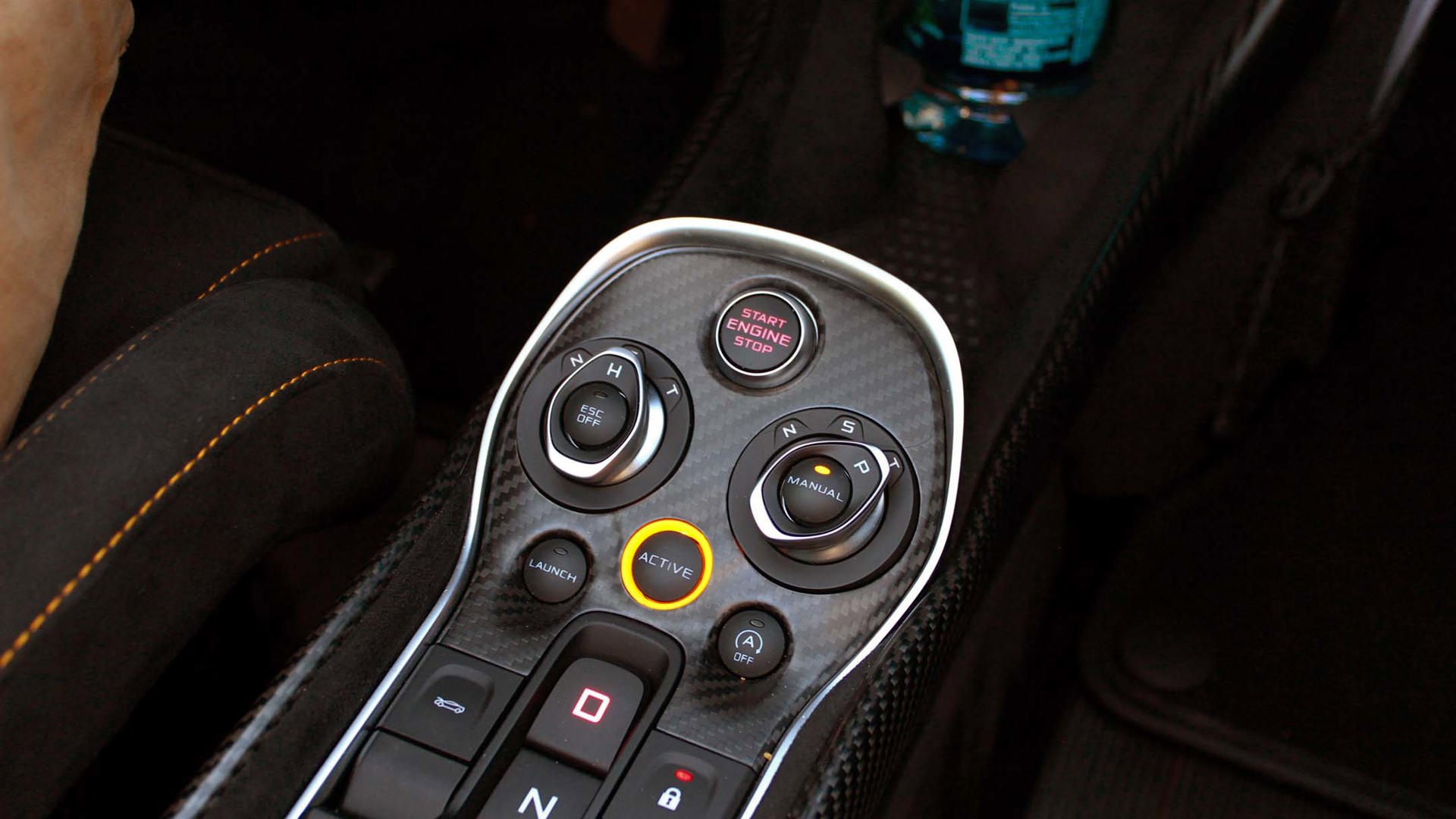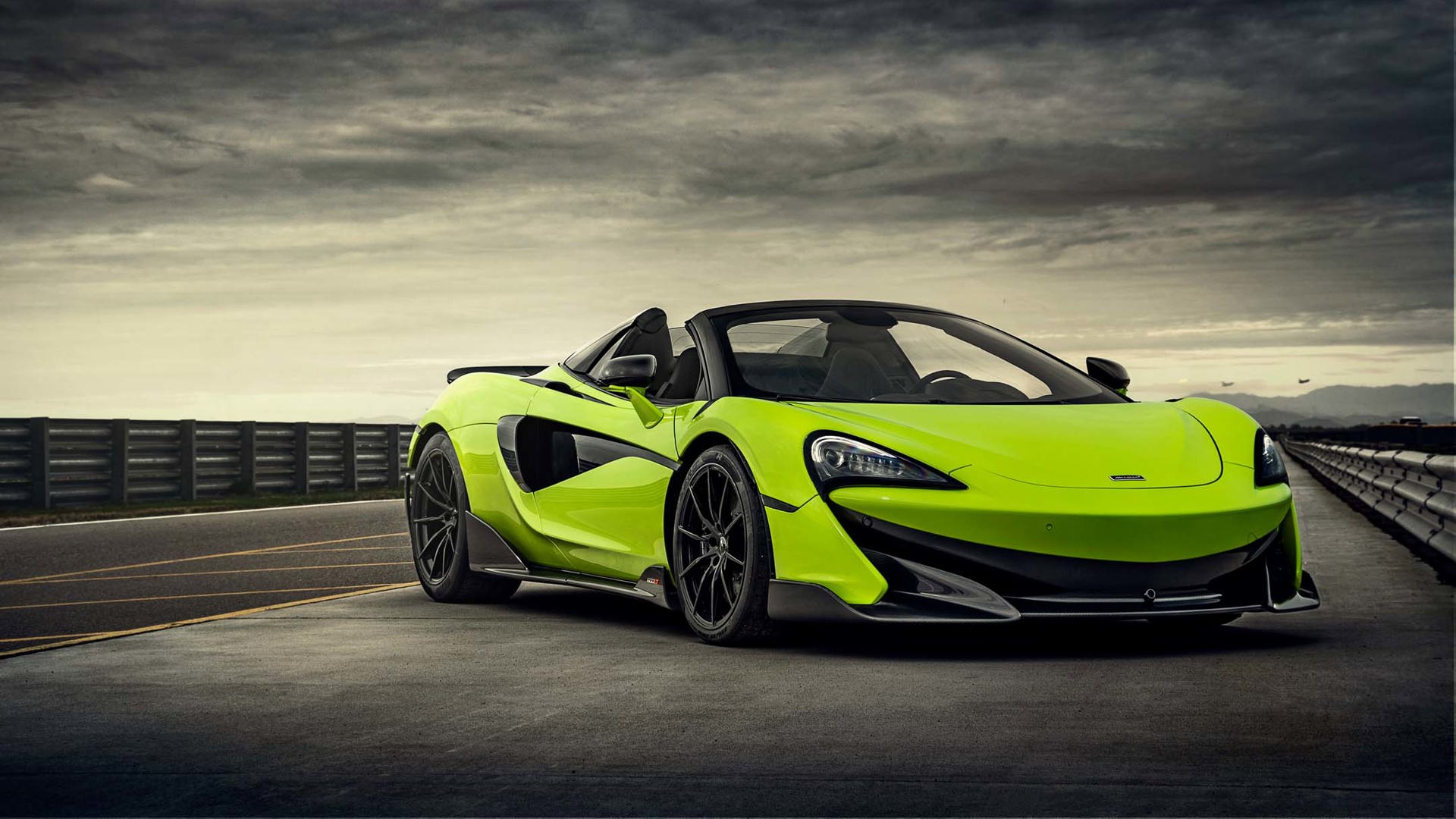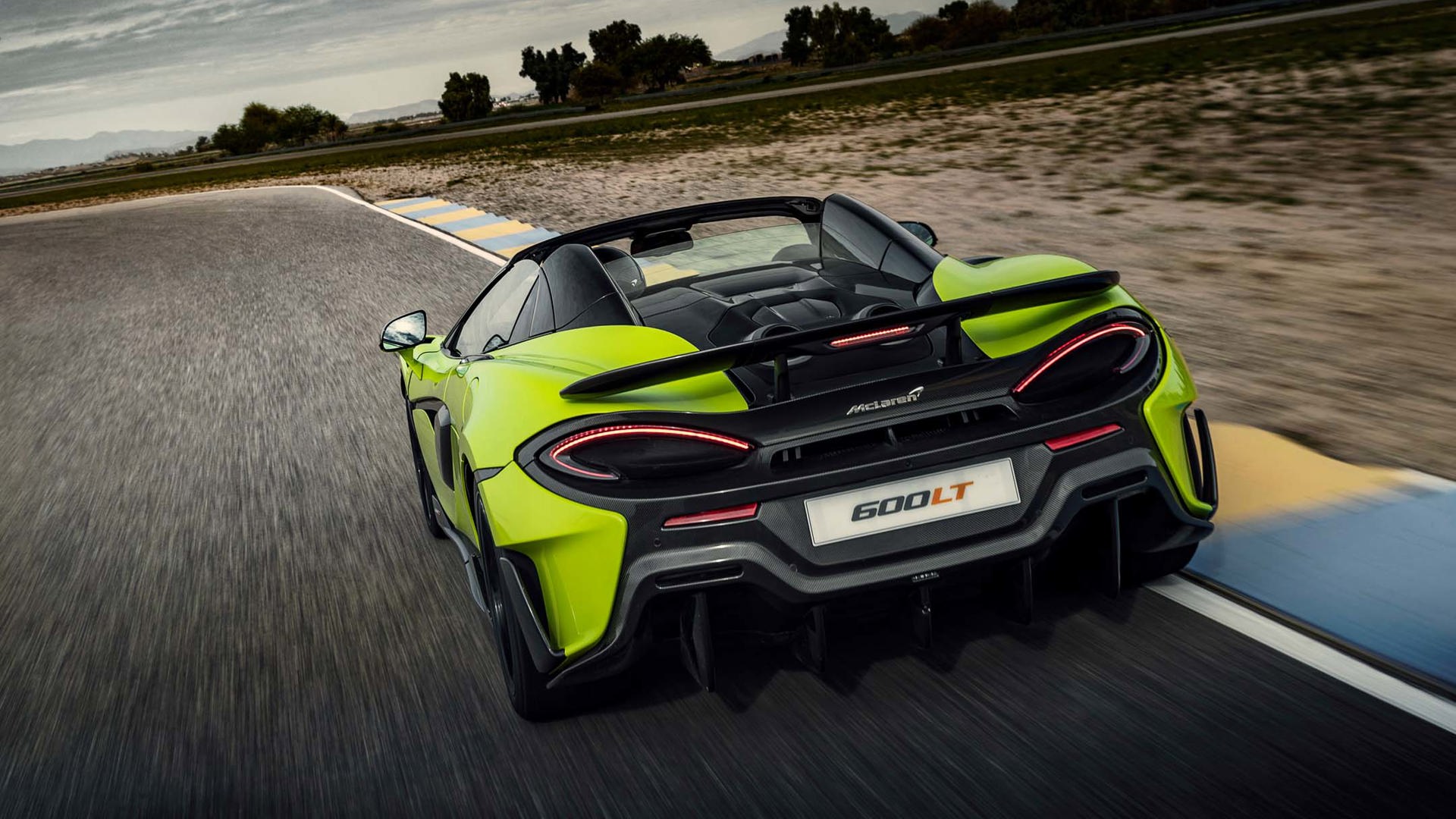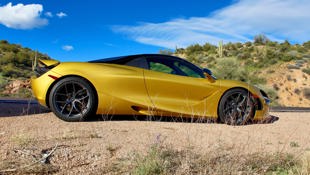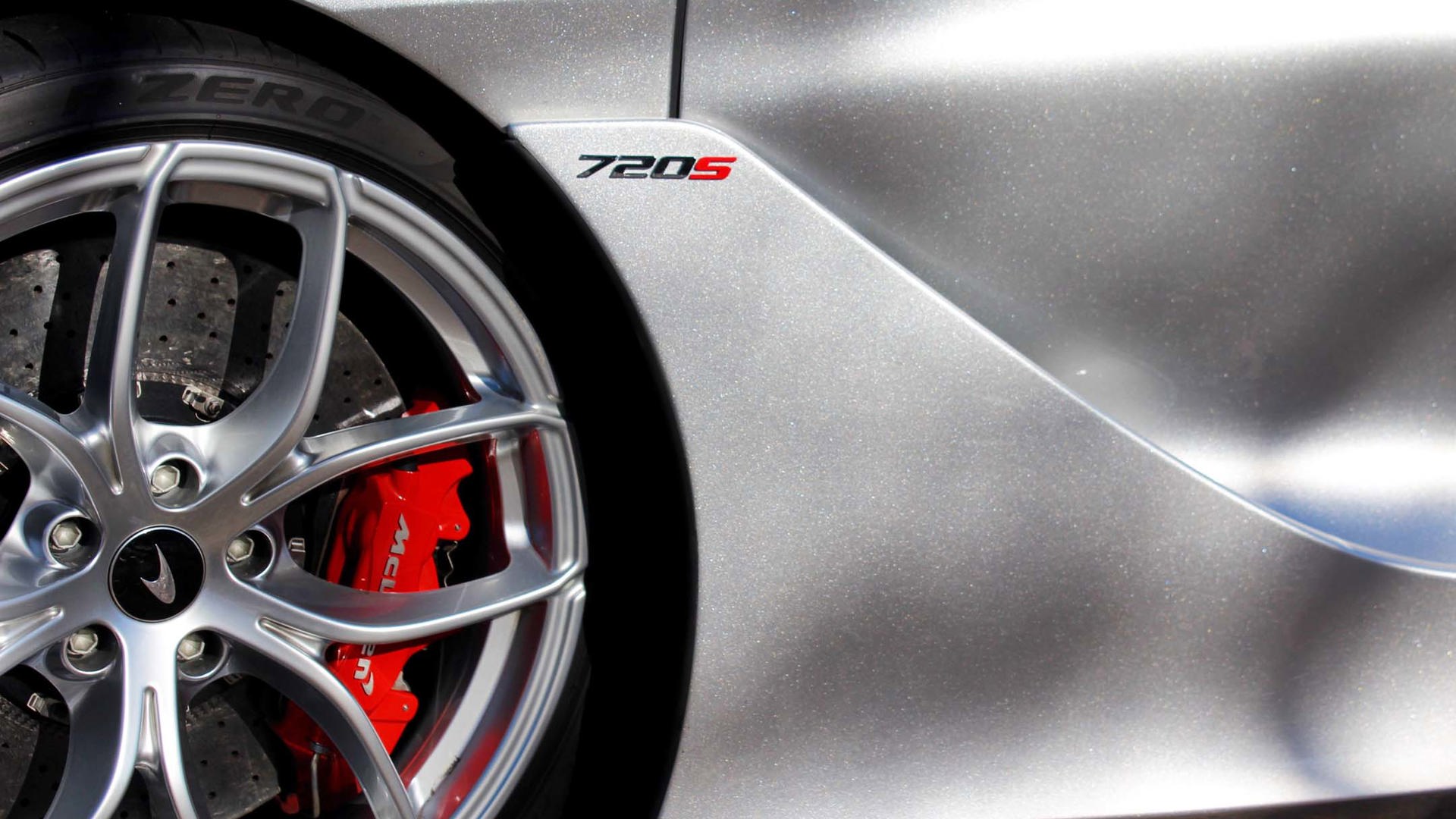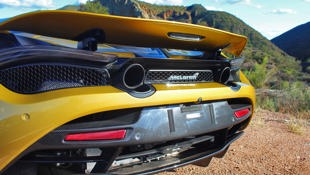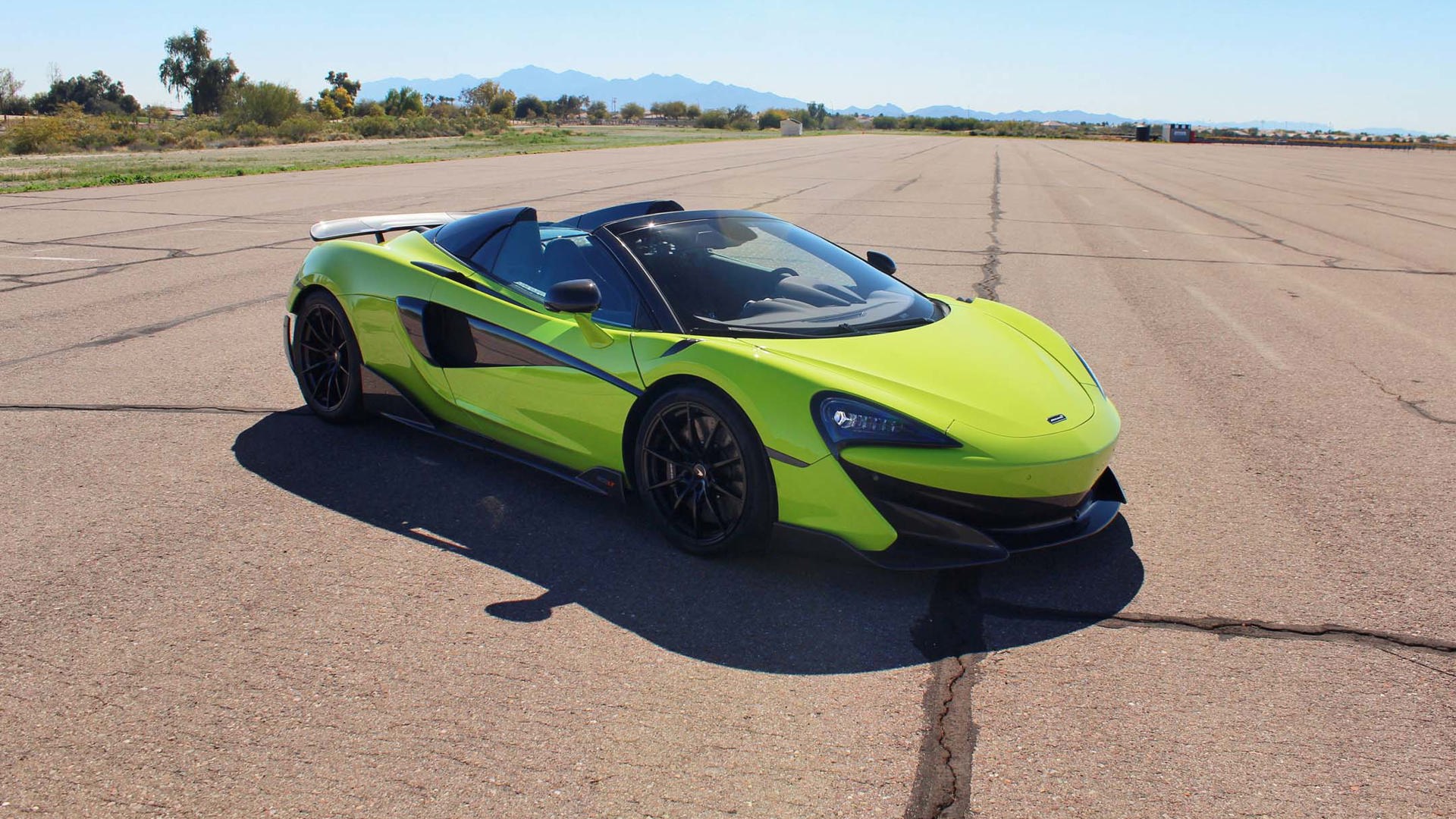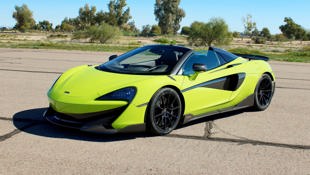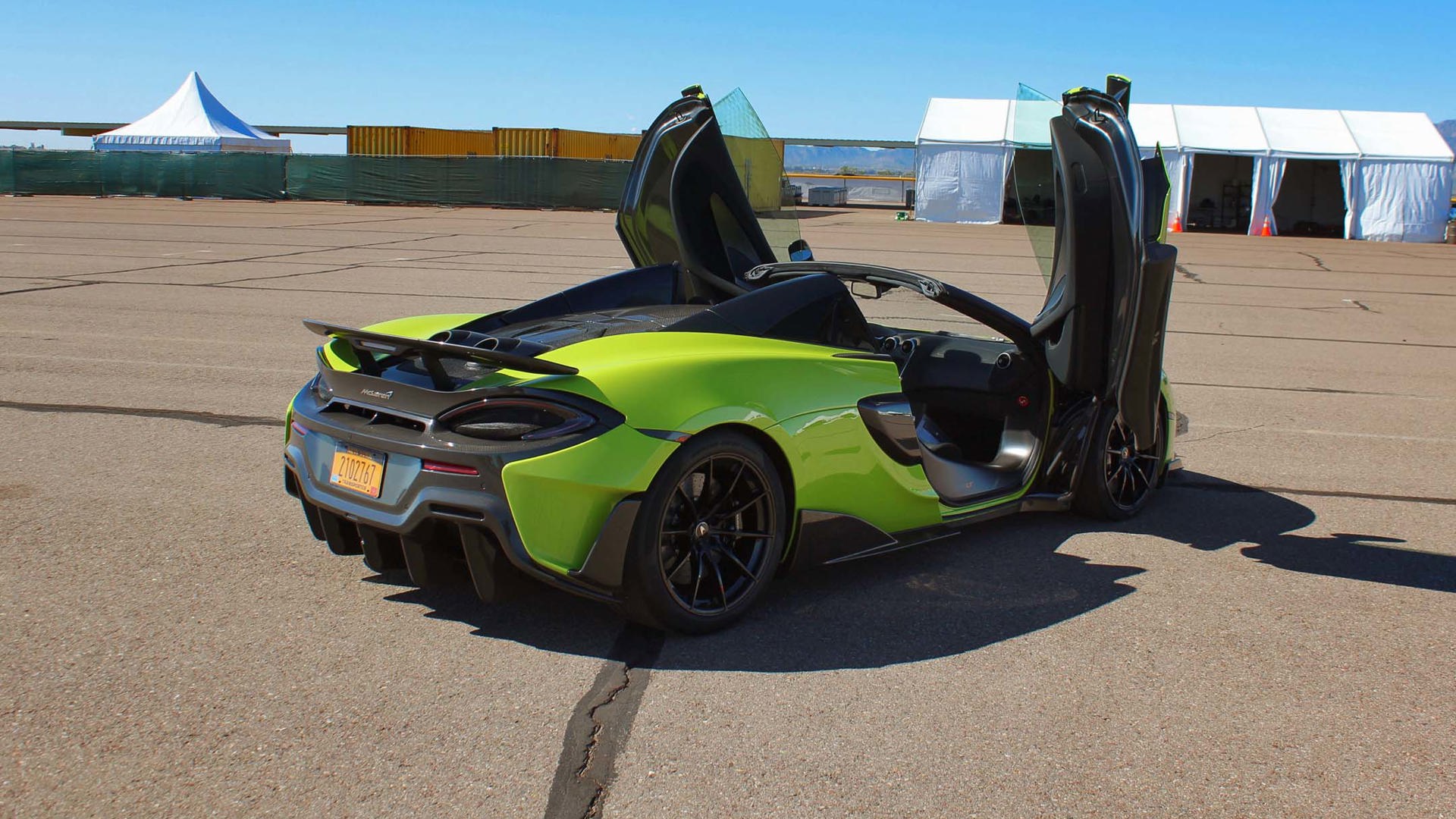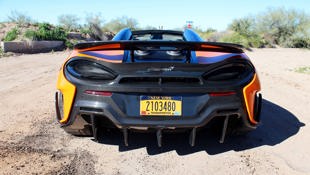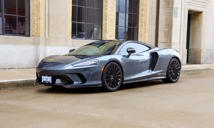PHOENIX, AZ – McLaren may have decades of race car building in the books, and its F1 road car from the ’90s (of which only 106 were built) is still a living legend, but McLaren Automotive, being the modern-day street car division of this British manufacture, is only entering its ninth year of existence.
2020 McLaren 720S Spider
That’s hard to fathom. Especially from within the snug confines of this tan-leather-lined 2020 McLaren 720S Spider – the new retractable hardtop version of that most capable carbon-fibre missile. I’m scything down some relatively deserted… um, desert roads outside of Phoenix, not even tickling the outer extremes of this carbon-fibre mid-engine hypercar’s envelope. Yet, not this side of a Bugatti Chiron have I experienced a car that, from relative elevated speeds, can surge forth with such afterburner intensity.
All this while the sun beats on my head and the wind rushes over the open cabin with hurricane force.
McLaren Automotive sold almost 5,000 cars globally last year, and that’s up 44 percent over 2017. They plan to have 18 new cars and/or derivatives in the stable by 2024. No SUVs and no full EVs, thank you. Hybrids, yes (they’ve all ready done the P1 and Speedtail), but full battery cars do not jibe with the lightweight ethos at McLaren. As one engineer explained, using today’s battery technology, a McLaren EV would have to weigh twice as much as today’s 720S just to match a ten-lap run at the Nardo circuit.
McLaren divides its rear-drive, mid-engine, carbon-fibre offerings into three categories: Sport Series (540C, 570GT, 570S, 570S Spider, 600LT Coupe, 600LT Spider; all powered by a 3.8L twin-turbo V8), Super Series (720S, 720S Spider with a 4.0L version of said V8), and the Ultimate Series that currently consists of the $1 million-plus Senna and the sold-out, and yes, even-more-pricey Speedtail hypercar.
Numbers correspond roughly to horsepower output, so my 720S Spider’s 4.0L twin-turbo V8 churns out 710 horsepower and 568 lb-ft of torque from a lofty 5,500–6,500 rpm. Power gets to the rear wheels through a seven-speed dual-clutch Seamless Shift Gearbox (SSG). Thinking of twin-turbo 4.0L V8s in these times, we might conjure up the Porsche/Audi/Lamborghini unit that delivers a wave of smooth torque right from the get go.
This turbocharged McLaren V8 is nothing like that. It’s a racy, top-end screamer that’s actually a bit flat until 4,000 rpm, after which the fireworks start. It’s edgy, thrilling, and literally screams race car heritage. But don’t expect a mellifluous exhaust note. The 4.0L is all business when sitting at a blatty idle. Give it some welly, and blat turns to blare; and from about 5,500 rpm a full-bore wail erupts to underscore the blistering forward pace.
A totally unique aural signature, all the more dramatic with the optional $6,490 Sports Exhaust and when the roof panel is stowed (it takes a scant 11 seconds). A single-piece carbon-fibre lid is standard, although my tester sported the glazed electrochromic roof panel ($9,940) that goes from five percent tint to 90 percent with a touch of a button.
And while on the subject of extras, most of these cars had at least 30 grand worth of upgrades.
As the 720S was engineered from the start to be a convertible, this Spider iteration loses nothing to the Coupe in structural integrity. Its Monocage II-S carbon-fibre tub is incredibly stiff, so lopping off the roof panel doesn’t really affect it. With only an additional 49 kg, there’s also no measurable affect to performance, although the aerodynamic engineers had to ensure the Spider maintained the correct balance of slipperiness and downforce. Hence those clever glazed flying buttresses that guide air over the tonneau and active rear spoiler.
Handling is superb, with a commendably civilized demeanour and compliant ride when the Handling and Powertrain rotary controls are set to Comfort (there’s also Sport and Track). Credit goes to McLaren’s complex Proactive Chassis Control II suspension that hydraulically connects the left and right dampers. Put simply, it allows for generous vertical wheel travel which dictates ride quality, while also maintaining the roll stiffness needed for ultimate handling.
McLaren states the 720S and Spider variant to be its model with the widest bandwidth of abilities. Aside from the inelegant ingress and egress, the Spider is about as user-friendly as a hypercar can be. Forward visibility is excellent, and rearward visibility surprisingly good for this class of vehicle. At only 1,332 kg, the 720S Spider scoots to 100 km/h in 2.9 seconds. You’ll see double that in 7.9 seconds.
The privilege of this experience will cost $350,000 in Canada, although this specimen is the $363,240 Luxury trim that adds a choice of four “By McLaren” Luxury leather interiors, interior and engine bay ambient lighting, powered heated seats, and special metallic interior brightwork.
The same figure also nets the racier-trimmed Performance with more carbon-fibre inside and out, along with a Nappa/Alcantara interior. Mechanically there are no differences.
2020 McLaren 600LT Spider
But what if the McLaren 720S Spider is just a bit too… luxury for you? You’d like a McLaren drop-top with a sharper edge, one that will eat up a race track and then carry you home in reasonable comfort.
Well, McLaren has built the car for you. Say hello to the limited run $298,500 600LT Spider – a more urgent, buttoned down, and faster version of the 570S Spider. Yes, it’s a Sports Series car, which means it runs with a 3.8L twin-turbo V8 and doesn’t get the Super Series trick hydraulic suspension, but it’s an LT. A what?
The LT designation in the McLaren world denotes Longtail, and is reserved only for its most circuit-focussed specials. Historically, it comes from the legendary McLaren F1 GTR Longtail that dominated the ’97 FIA GT Championship. That race car, and its three road-going brethren, were all about optimized aero, reduced weight, increased driver involvement, track-focussed dynamics, enhanced power and exclusivity. Ditto for the 2016 675LT, the 2019 McLaren 600LT Coupe, and now this Spider version.
The 570S Spider’s 3.8L twin-turbo V8 gets a kick in output for 600LT duty. Horsepower jumps from 562 to 592, and torque from 443 lb-ft to 457 lb-ft, the latter arriving 500 rpm higher in the rev range (5,500 to 6,500 rpm). The extra juice comes from hotter cams, new ECU and a shorter, lighter exhaust that exits via two cannon-size outlets pointing skyward from the rear deck. They will spit flames, thus requiring the fixed rear spoiler to sport a fire-proof coating.
But the 600LT is more than just extra firepower. Nearly a quarter of its parts are all new. The lightweight brakes and forged aluminum suspension parts come from the 720S, and the 74 mm of additional aero give this wedge 220 lb of downforce at 250 km/h.
The cabin is a relatively simple affair, here trimmed in Alcantara. The standard sports seats are superb, as is the driving position and forward visibility. Two rotary switches down on the centre console, for Handling and for Powertrain, adjust the car’s dynamic parameters. There are three settings for each – Normal, Sport, and Track. This is a clever setup, having chassis adjustments separate from the drivetrain, as you don’t always want a super stiff ride when the engine and transmission are in full attack mode.
The carbon-fibre steering wheel is a thing of beauty, not only in the way it looks, but also in what it transmits to the palm of your hands. On the road, the 600LT is tingling with detail, and it gives up nothing to the 720S Spider in a hole-shot drag race, matching that Super Series car’s 2.9 second blast to 100 km/h. Yet on these nearly deserted roads that snake among the ancient Saguaro cacti, the 600LT Spider feels more immediate, raw, intimate, and buttoned-down than the 720S Spider. More exciting, if that is even possible. The super-sticky bespoke Pirelli P-Zero Trofeo R tires certainly play their part here.
In Track mode, the transmission bangs off perfectly timed upshifts and downshifts with just enough violence. Play with the paddles and it will gladly hand you the reins. Press the M button and it becomes fully manual.
Following this speedy road drive we arrive at Arizona Motorsports Park, where McLaren has set up some generous track time. Here we get to experience the 600LT in its natural environment, not to say driving this track special on the road is any great hardship.
The 3.6 km circuit with its 16 turns is well suited to the Longtail. Expert instruction from some of McLaren’s finest (and bravest) coaches soon has us up to a speed… for the drivers at least, maybe not so much for this incredibly capable near-race car. The brakes are heroic, although like all McLaren binders they require a firm shove, and the car’s stability under hard is impressive. This is not a hard car to get comfortable with, such is its level of communication, stability through corners, and the expertly sorted electronic stability control that allows plenty of leeway in Track mode. For a couple of laps, all the nannies were completely turned off, and this is when the 600LT’s tail would fling wide when putting the power down early.
As with the 720S Spiders we drove the previous day, these 600LT Spiders carried at least a Toyota Camry’s worth of packages and upgrades. McLaren predicts about half of Sport Series and Super Series buyers will opt for these retractable hardtop versions, and it’s not hard to see why. There’s no penalty to performance or structural rigidity, ingress and egress is easier (with the top stowed), and the open-air experience only adds to the allure of these unique, thrilling, lightweight British supercars.
And in the case of the 600LT Spider, you can be assured it’s the only car in its class that will shoot flames skyward not that far from the back of your head. A recommendation for man-buns if ever there were one.
